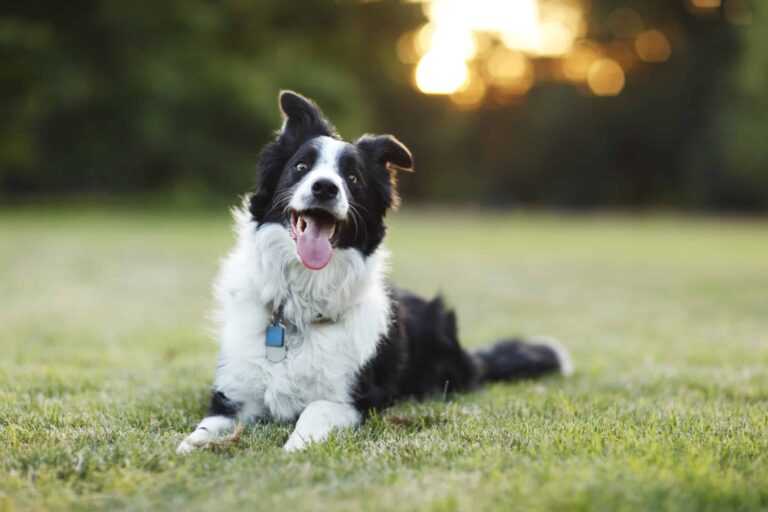Border Collie and Shetland Sheepdog: Border Sheepdog Dog Breed Information
The Border Sheepdog mixes the brilliant Border Collie and the attentive Shetland Sheepdog. It’s a breed that stands out for its intelligence, agility, and herding skills.
These dogs have high energy levels and need daily exercise and mental stimulation. They are alert and often bark, making them good pets and effective watchdogs.
Their behavior with kids and adults can differ, so it’s essential for anyone thinking of getting one to know about their temperament.
Understanding how to train, socialize, and care for a Border Sheepdog is crucial in bringing out their best qualities. These dogs are active and full of life. They thrive when their owners invest time in their training and overall well-being.
Key Takeaways
- Border Sheepdogs excel in intelligence and herding.
- They require daily exercise and mental tasks.
- Proper training ensures good behavior around children and adults.
Quick Facts
The Border Sheepdog is a mix of the Border Collie and the Shetland Sheepdog.
These medium-sized dogs have coats in various colors like black, blue, merle, and sable, usually with white and tan highlights.
They inherit their parents’ skills in herding and their need for lots of activity.
A Border Sheepdog must exercise enough for their mind and body to stay healthy and well-behaved.
They are alert and build strong connections with their owners, making them good guard dogs.
However, their high energy might be too much for little kids.
Regular check-ups with the vet are essential to keep these active dogs in good shape.
Border Sheepdog Dog Breed Pictures

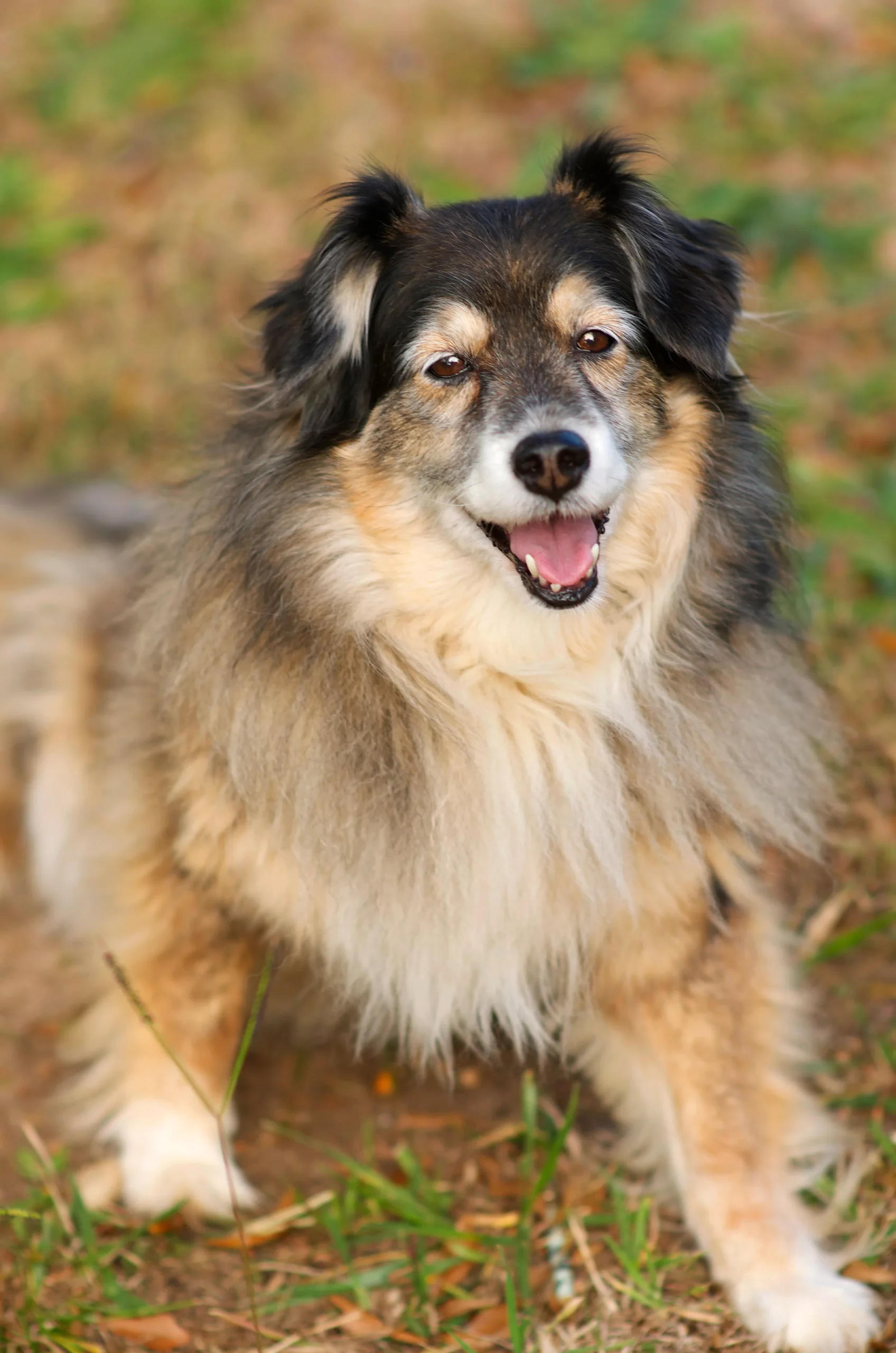
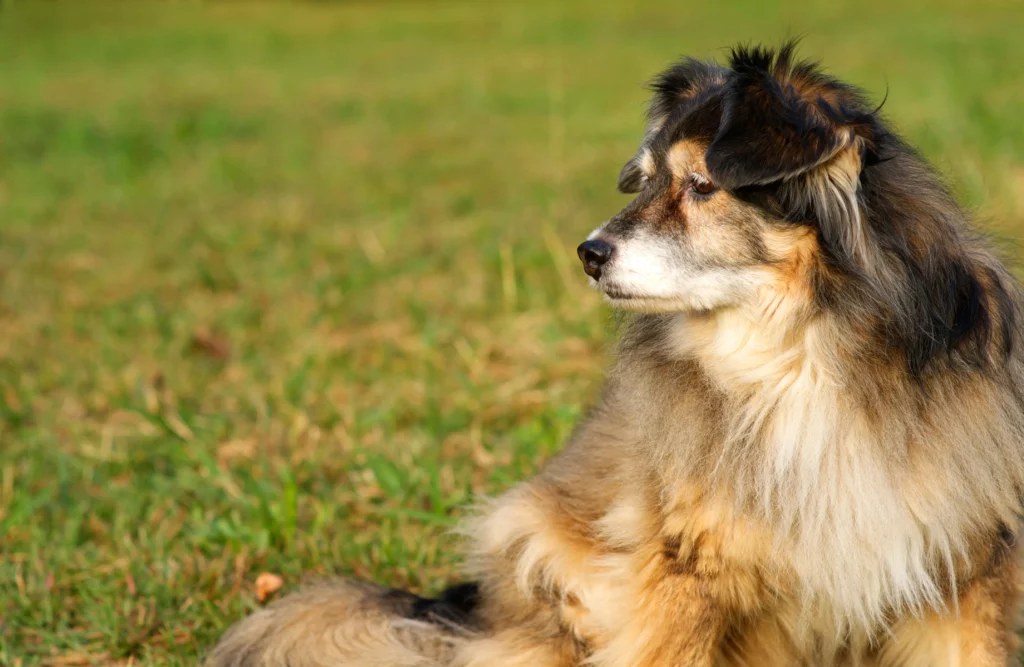
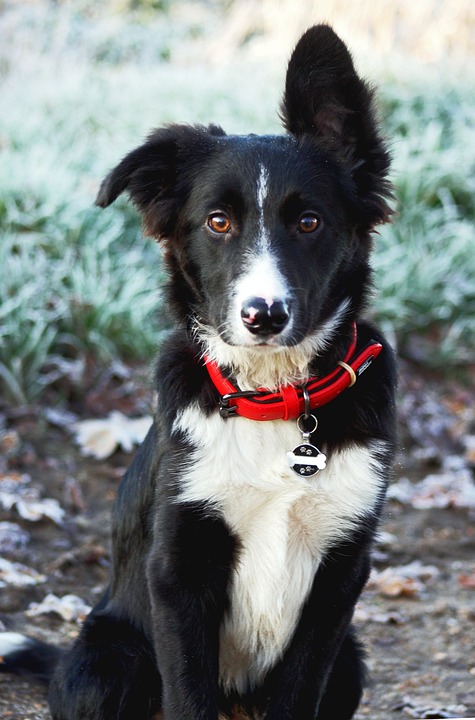


Overview
Building on the foundational qualities of the Border Sheepdog, it is essential to explore the breed’s characteristics, care requirements, and suitability for various lifestyles to provide a comprehensive overview.
The Border Sheepdog, a hybrid of the astute Border Collie and the vivacious Shetland Sheepdog, exhibits traits conducive to companionship and practical functionality. With a medium-sized stature, their weight range of 25 to 45 pounds and distinctive coat colors align with the aesthetic standards often appreciated by enthusiasts.
Despite not being recognized by the American Kennel Club, their herding instincts remain intact, making them viable contenders in Sheepdog trials. Prospective owners must commit to consistent grooming and ample exercise to mitigate health risks such as hip dysplasia.
Their high energy and intelligence necessitate an engaged, active environment for optimal well-being.
Key Traits
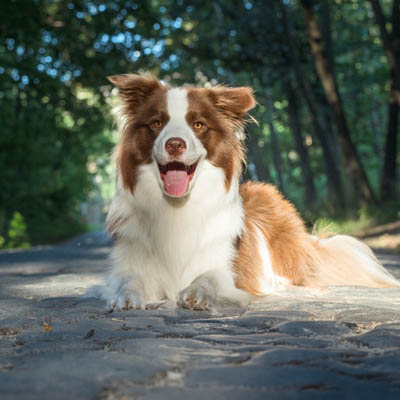
Delving into the critical traits of Border Sheepdogs, it becomes evident that their mixed lineage contributes to a rich tapestry of characteristics, including a diverse color palette and a predisposition for certain genetic health conditions. Descended from herding dogs, they exhibit significant energy levels, necessitating a lot of exercise for optimal health. This breed’s intelligence demands ample mental stimulation to prevent behavioral issues. The double coat is a distinct feature that protects against harsh weather but also requires regular grooming.
| Trait | Description |
|---|---|
| Energy and Exercise Needs | High |
| Mental Stimulation | Essential |
| Coat Characteristics | Double Coat |
Border Sheepdogs thrive in environments where they can channel their herding instincts and remain physically and mentally engaged. Regular veterinary care is advisable to monitor breed-specific health concerns.
Origins and Development of Border Collie and Shetland Sheepdog Breed
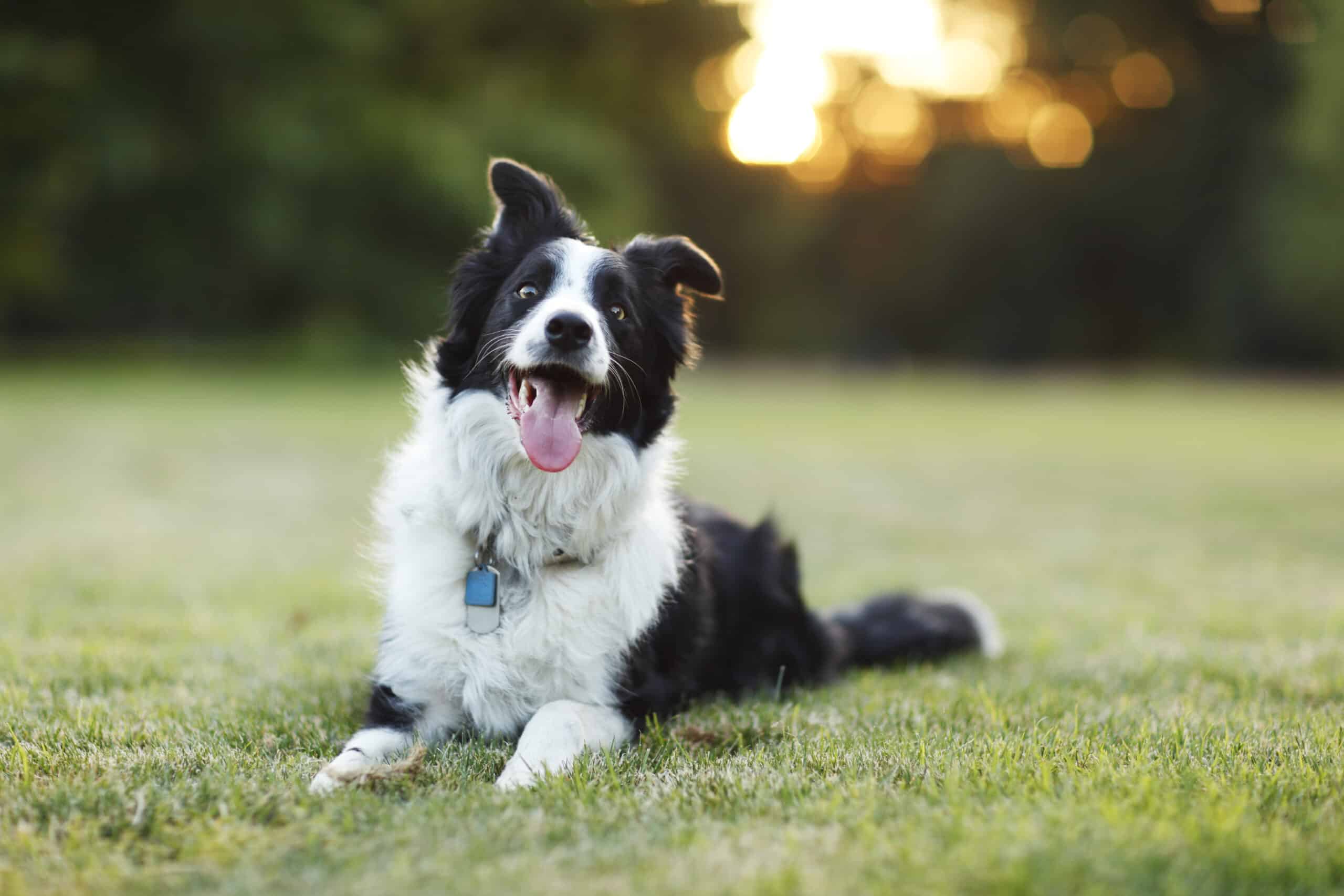
The Border Sheepdog, a new mix, comes from the rural areas of the UK. It’s the result of breeding a Border Collie with a Shetland Sheepdog. This crossbreed has the intelligence and skill of its parents. Studying the breed is essential to understanding how it fits into farm and home life.
- Early Roots: We look at the Border Sheepdog’s genetic background and the history of its parent breeds.
- Breed Changes: We examine how breeders’ specific traits have shaped the Border Sheepdog.
- Important Dogs: We recognize the influential dogs contributing to the Border Sheepdog’s history and image.
- Keeping the Breed Healthy: We evaluate the efforts to preserve the Border Sheepdog’s well-being and traits.
- New Roles: We consider how the Border Sheepdog has moved from primarily herding to being a pet and participating in dog sports.
Early Ancestry
The Border Sheepdog has a heritage deeply rooted in herding traditions thanks to its Border Collie and Shetland Sheepdog parents. These dogs hail from Scotland and the Shetland Islands.
Known for their intelligence and agility, Border Collies were originally bred in Scotland and England as herding dogs. They became skilled at working with livestock due to focused generating over many years.
On the other hand, the Shetland Sheepdog came from the Shetland Islands, created from a blend of Pomeranian and various Nordic breeds, becoming well-suited for herding in their local environment.
The Border Sheepdog’s creation results from merging these two breeds, combining their strong herding instincts and varied genetic makeup. This crossbreed inherits the best traits from both, making it a capable and versatile herding companion.
Breed Evolution
The Border Sheepdog stands out, having evolved from the esteemed herding history of its forebears. This crossbreed marries the traits of the Border Collie and the Shetland Sheepdog, adapting to modern needs in herding and as a pet.
These parent breeds have illustrious backgrounds contributing to the Border Sheepdog’s makeup. Known for its exceptional herding skills, the Border Collie hails from Scotland and England, dating back to the 19th century. The Shetland Sheepdog brings its sharp wits and vigilance from the Shetland Islands, with influences from Scandinavian breeds.
Together, they produced the Border Sheepdog, a dynamic herder reflecting the practical and adaptable trends in dog breeding.
Notable Historical Dogs
Exploring the history of the Border Sheepdog reveals its significant past, influenced by the herding dogs of Scotland, England, and the Shetland Islands. This breed emerged from mixing the Border Collie and the Shetland Sheepdog, both known for their exceptional intelligence and agility.
These medium-sized dogs have been central to farming in their areas and are recognized by the American Kennel Club for their skills in herding and obedience. Their training reflects their instincts, smarts, and ability to respond, showing the deep roots of their heritage.
The Border Sheepdog plays an essential role in the evolution of the American Sheepdog and honors the herding traditions of its ancestors.
Puppy and Adult Stature and Build
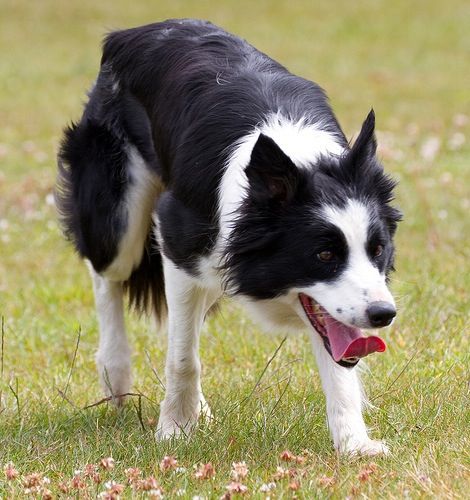
The Border Sheepdog, a crossbreed of the Border Collie and Shetland Sheepdog, showcases diverse physical traits. These traits significantly affect the dog’s agility and ability to work.
We can understand their effectiveness in different activities by looking at their size, body shape, weight, and muscle structure.
- Size Range
- Body Shape
- Weight Factors
- Agility and Athletic Ability
- Muscle Structure and Power
The size range of the Border Sheepdog can vary, but they typically fall into a medium range. Their body shape is often a blend of both parent breeds, making them sturdy and elegant. Understanding their weight is crucial since it influences their energy levels and overall health.
These dogs are known for their impressive athletic ability. They move quickly and precisely, making them excellent for herding or dog sports. Their muscle structure contributes to their strength and endurance, which are vital for their functioning as working dogs.
Typical Size Range
Border Sheepdogs are medium-sized dogs, typically weighing 25 to 45 pounds and standing 16 to 22 inches at the shoulder. These measurements reflect their heritage, stemming from Border Collies and Shetland Sheepdogs. Size differences in Border Sheepdogs depend on which parent breed’s genes are more dominant.
Their not-too-large, not-too-small size makes them versatile enough to live in various homes. Still, owners must ensure enough space for the dog’s activity levels.
Owners should pay attention to their living space size to ensure it suits their Border Sheepdog’s need to move around and play. Consistent grooming and a healthy diet are crucial to preventing issues like hip dysplasia, common in collies and their mixes. Caring correctly for a Border Sheepdog means being ready to meet their physical and mental needs with dedication.
Physical Structure
Border Sheepdogs, a blend of Border Collie and Shetland Sheepdogs, have a sturdy yet graceful physique. They are medium-sized, agile, and well-balanced, much like their ancestors.
Their long, soft fur requires frequent brushing to avoid tangles and keep their coats healthy.
Health issues common in this breed include hip dysplasia and progressive retinal atrophy, leading to vision problems. Regular vet check-ups and careful breeding can help reduce these risks.
Some Border Sheepdogs might have shorter coats, like Border Collies, making grooming easier.
Weight Considerations
Border Sheepdogs, a breed with varied ancestry, have a weight range of 25 to 45 pounds. They stand about 16 to 22 inches tall at the shoulder. These factors are vital in figuring out their food intake, exercise needs, and the best living spaces.
They naturally need to stay active because they inherit traits from working breeds that are used to herding and running. They must have a solid routine of physical activities to avoid gaining too much weight.
Bigger dogs in this breed might need more room inside and outside the house. This is to handle their larger size and higher energy. Their weight and size also put them at risk for health issues. Feeding them a well-balanced diet and keeping them moving regularly is essential. Doing so helps them stay healthy and prevents weight-related problems and joint conditions that come from not being active enough.
Athleticism and Agility
Border Sheepdogs are known for their athletic capabilities and impressive agility. These medium-sized dogs have a balanced build, contributing to their quick and graceful movements. These traits are particularly beneficial for participating in dog sports, where their agility is a significant advantage.
Being partly descended from Border Collies, they have a lot of energy and need regular exercise to stay fit and happy. Keeping them active can also prevent behavior problems caused by boredom.
It’s also vital to start socializing these dogs early on. This helps to moderate their instinct to chase and their cautiousness around new people. With proper training, their agility is complemented by a friendly nature and good manners.
Musculature and Strength
A Border Sheepdog’s muscle structure and strength come from its diverse genetic background. It has a Border Collie’s muscular body and the Shetland Sheepdog’s quick agility.
This medium-sized dog usually weighs 25 to 45 pounds and stands 16 to 22 inches tall at the shoulder. To keep its muscles well-defined, a Border Sheepdog needs lots of exercise.
The physical power of this dog breed isn’t just for looks. It’s critical to their happiness and health. Good food and regular workouts improve their natural skills, especially for herding and other energetic tasks.
Knowing these blended traits is essential to creating effective exercise and training plans that suit the Border Sheepdog’s body and abilities.
Pet Parent Temperament and Behavior

The Border Sheepdog is known for its sharp intelligence and energetic nature, demanding an environment that keeps them physically and mentally stimulated. Their herding heritage influences how they behave around people and during training. Addressing their unique behavioral needs is critical to fitting into a family home nicely.
- Personality Traits: Examining what makes a Border Sheepdog’s personality stand out.
- Social Interaction Skills: How well they interact with people and other pets.
- Training and Obedience: Reviewing the most effective training techniques for this breed.
- Energy and Exercise: Recognizing their need for regular exercise for their health and well-being.
- Behavioral Challenges: Tackling issues like their natural herding tendencies and quick reactions.
The Border Sheepdog requires an engaging environment to thrive. Understanding their herding background is critical to their social behavior and learning process. It’s essential to tackle breed-specific behaviors for a peaceful life at home.
- Personality Traits: Understand the unique personality of a Border Sheepdog.
- Social Interaction Skills: Evaluate their interaction skills with humans and other animals.
- Training and Obedience: Determine the best training practices for obedience.
- Energy and Exercise: Know the importance of physical activity for their health.
- Behavioral Challenges: Address issues like herding instincts and high reactivity.
Personality Traits
Renowned for their keen intelligence and abundant energy, Border Sheepdogs exhibit a temperament that necessitates regular physical exercise and mental engagement to prevent undesirable behaviors. Originating from the Border Collie lineage, they inherit a capacity for problem-solving and a propensity for learning, making them exceptionally easy to train.
The personalities of the Border Sheepdog are multifaceted; they are alert and can be vocal, serving well as watchdogs with a protective streak.
Their affectionate nature towards family is palpable, and their devotion as family dogs extends beyond simple companionship—they thrive on being integral parts of their human pack’s daily activities. Proper training and socialization can harness their potential for solid attachments and cooperative behavior, creating harmonious relationships within a household.
Social Interaction Skills
Border Sheepdogs are known for their intelligence and vivacity, and their social skills are greatly influenced by their unique temperaments and behaviors.
In different social settings, these traits become pretty evident. With targeted dog training, these furry companions are taught how to handle various social situations, reacting with either excitement or prudence, depending on their natural inclinations.
When it’s time to play, the Border Sheepdog’s affectionate side shines through, allowing them to connect and display their friendliness. These dogs are praised for their versatility and pleasant nature, which bring happiness and a sense of unity to their human families.
Regular training and positive social interactions are crucial to refining these abilities, ensuring Border Sheepdogs behave well and build strong bonds in various environments.
Training and Obedience
Border Sheepdogs are a mix of intelligence and energy, which shapes how they’re trained. Intelligence from the Border Collie side means they quickly pick up complex commands. Their energy needs to be directed so they learn positively. These dogs have a strong prey drive, so early training is critical to control chasing habits.
Living in an apartment is okay for them as long as they get enough exercise. But they’re smart, so they need activities that make them think to avoid getting into trouble. A good training program for a Border Sheepdog combines exercise with brain games, helping them become well-rounded pets.
Energy and Exercise
Border Sheepdogs are known for their high energy levels and need for daily physical and mental stimulation. Initially bred for active herding jobs, these dogs must have ways to burn off their energy. They thrive with a combination of playtime indoors and vigorous outdoor exercises.
If they get enough exercise, they can live happily in an apartment. However, if they don’t get to work off their energy, they might start displaying problem behaviors due to their intelligence. Therefore, regular exercise is vital to keeping them healthy and well-behaved.
Regular visits to the vet are also essential to keep these energetic dogs in top shape.
Behavioral Challenges
Understanding a Border Sheepdog’s herding instincts is critical to managing their behavior. They need clear and consistent training. These dogs like to take charge, which can lead to excessive barking or trying to herd children and other animals.
They can also get anxious when left alone, which might cause separation anxiety. Border Sheepdogs are not the best fit for small apartments. They need a lot of space and activities to keep their minds busy and to prevent them from acting out.
When training and socializing Border Sheepdogs, a thoughtful approach is necessary; they might become stubborn or overly protective if not trained and dated correctly. Dog owners should be ready to put in the effort for ongoing training. This will help the dog to be well-behaved and friendly.
Wellness Considerations
A well-rounded approach to their care is necessary to keep Border Collies healthy and energetic. This includes preventive health strategies, ensuring proper nutrition, and providing enough exercise. Early detection of inherited health issues through screenings is critical for effective treatment. Customizing their diet and exercise plans is vital for their physical and mental well-being.
Genetic testing is vital for spotting hereditary diseases in Border Collies.
A balanced diet is essential to prevent weight gain and sustain energy levels.
Border Collies need exercise plans that match their endurance and skill.
The right food choices can improve their dental health and fur quality.
Regular vet visits help keep track of a Border Collie’s health indicators.
Maintaining the health of Border Collies requires a comprehensive wellness strategy that includes preventative care, proper diet, and sufficient physical activity. Health screenings are crucial for identifying genetic disorders early, allowing prompt treatment. Evaluating their dietary needs and customizing exercise routines are imperative for their physical and mental well-being.
It’s essential to conduct genetic tests to detect inherited diseases.
Balanced nutrition is critical to preventing obesity and keeping their energy up.
Exercise routines should be designed to fit the breed’s high energy and agility.
Diet affects their dental health and the condition of their coat.
Ongoing veterinary care is essential to track their health status.
Health Screening Importance
Regular health check-ups are critical for Border Sheepdogs to catch and manage health issues common to their breed. These exams are crucial to spotting illnesses early, like hip dysplasia and eye problems, which can significantly impact these dogs. Health screenings for Border Collies and their mixed breeds are essential. They allow owners to provide the proper care at the right time.
Staying up-to-date with vet visits helps owners customize their dog’s care and environment. Being proactive about health checks is vital for the well-being of Border Sheepdogs, as it helps prevent diseases before they become serious.
Owners should keep a consistent vet appointment schedule to address their dogs’ unique health needs. This helps them adapt their home and daily routines to suit their pet’s well-being better. Early detection through these screenings can lead to better management of breed-specific conditions. This ensures a longer, happier life for Border Sheepdogs.
Diet and Nutrition
Proper nutrition is the foundation of health for a Border Sheepdog. This breed, born from the Border Collie and other herding dogs, needs a diet that keeps up with their energetic lifestyle. A vet can help create a meal plan for this dog, considering any breed-specific health issues.
A Border Sheepdog must have daily access to clean water to stay hydrated.
To prevent obesity, it’s essential to control how much the dog eats. Treats should be healthy and given in small amounts so they don’t upset the balance of the dog’s diet.
Exercise Requirements
Border Sheepdogs need regular physical activity and mental stimulation to stay healthy and avoid behavior problems. These dogs were bred for herding and have a lot of energy and smarts that must be used daily. Experts recommend combining exercise and brain games to keep them happy and healthy.
Border Sheepdogs can handle many kinds of workouts as long as they’re intense enough. When you’re planning their exercise, think about activities that work their bodies and minds at the same time. For example, agility training is excellent for their fitness, and learning new commands keeps their brains sharp.
It’s essential to keep up with their exercise routine to ensure they have a good environment.
Essential Maintenance Routines
A thorough maintenance plan is necessary to keep a Border Sheepdog healthy and happy. This plan should cover the dog’s physical, dietary, and mental health needs. Keeping up with these routines helps prevent common ailments and supports a well-rounded life for your dog.
Regular vet visits are vital in catching and addressing health issues early. Border Sheepdogs need daily exercise to stay fit, given their energetic nature. It’s important to groom them often to keep their coat in good condition. A balanced diet with the right nutrients is vital for their health. Proper training and socialization make for a well-behaved and friendly pet.
In short, taking care of a Border Sheepdog involves:
- Health check-ups to spot and treat health problems early.
- Exercise every day to keep them active and healthy.
- Grooming to keep their coat clean and healthy.
- A nutritious diet ensures they get all the necessary vitamins and minerals.
- Training and socializing so they’re good companions.
Following these steps will help maintain the well-being of your Border Sheepdog.
Routine Health Check-ups
Border Sheepdogs need regular vet check-ups to monitor their health, especially for hip dysplasia and eye problems. These visits become more critical as the dog ages to catch and treat health problems early.
The way we look after these dogs should be specific to them, ensuring they have the proper shelter and care to deal with their low tolerance for cold weather. Special care is needed to prevent health issues related to the cold because they don’t handle it well.
On the other hand, Border Sheepdogs are resilient and don’t get sick often if they have a good diet, plenty of exercise, and things to keep their mind busy. This makes them great for active families with older kids.
Keeping them healthy involves a balanced diet, regular physical activity, and mental challenges, all of which help them thrive.
Daily Exercise Regimen
Routine health check-ups are essential for keeping an eye on the health of Border Sheepdogs. However, giving them a regular exercise schedule is just as vital.
These dogs are descendants of the Border Collie and thrive when given plenty of physical and mental stimulation. Border Sheepdogs benefit from daily activities like energetic walks, runs, and playful interactions to keep up with their lively and intelligent personalities.
Incorporate brain games such as puzzles and agility courses to challenge their intellect. It’s also good to include activities that tap into their natural herding instincts, such as playing fetch or using a flirt pole.
Adjusting them based on age, health, and energy is essential to ensure these exercises suit the dog’s needs. Always consult a vet to ensure the dog’s exercise plan is appropriate.
This approach helps Border Sheepdogs lead a fulfilling and balanced life.
Regular Grooming Needs
Regular grooming is essential for Border Sheepdogs to maintain soft fur and prevent skin issues and matting. Their coat experiences moderate to heavy shedding, which requires specific grooming tools to manage dead hair and minimize loose fur in the home.
Despite not having short, low-shedding coats, their grooming routines are still relatively straightforward. It’s best to brush these dogs several times a week to keep their hair under control and prevent tangles. Their coat stays healthy with this care.
Regular baths and nail trims also keep a Border Sheepdog in top condition. Consistent grooming, good food, exercise, and regular vet check-ups are critical to a happy and well-maintained dog.
Nutritional Diet Planning
Proper grooming keeps a Border Sheepdog looking good on the outside, but a well-thought-out diet is vital to their health and energy levels. Border Collies have lots of energy and need the right mix of proteins, carbs, and fats. This keeps them fit for their active lives and helps maintain their muscles.
We must choose high-quality, easy-to-digest food to prevent hip dysplasia and eye problems. It’s also essential to control how much they eat and to have regular meal times to stop them from getting overweight and to keep them in good shape. Getting advice from a vet about what to feed your Border Sheepdog can help, as they can suggest food that’s just right for your dog’s needs. Keep an eye on how your dog is doing and be ready to change their food if needed. This helps them stay fit and healthy for a long time.
As an owner, you must be committed to looking after your dog, whether they live indoors or have to get used to different weather conditions. Border Sheepdogs need a balanced diet and regular check-ups with a vet to stay healthy. Ensuring they get the right food is a big part of keeping them energetic and avoiding health problems. Remember, a healthy dog is a happy dog!
Training and Socialization
Training and socialization are crucial for the well-being and adaptability of Border Sheepdogs. These dogs are intelligent, much like their Border Collie ancestors, which often makes training more accessible than other breeds. Regular and engaging activities are necessary for them to utilize their abilities fully. Border Sheepdogs are known to be one of the easiest breeds to train because of their willingness to learn. However, without early socialization, their natural wariness can develop into distrust of strangers or other animals. It is essential to teach them how to behave in various situations. This requires implementing a structured socialization plan to shape their natural loyalty and warmth positively.
Nutritional Requirements
Border Sheepdogs have high energy levels and a strong work ethic, so their diet must be carefully balanced. It’s critical to consider all the necessary nutrients and proper feeding routines to keep them healthy and full of vigor.
Each dog’s diet should be customized based on age, activity, and any health issues.
A good diet should include Protein, carbohydrates, fats, vitamins, and minerals. Special adjustments should be made for the dog’s life stage, exercise habits, and overall health. Planning meal times to support good digestion and steady energy is beneficial.
To avoid weight gain, matching the number of calories a dog eats with how much exercise they get is essential. It’s also vital for dogs to have constant access to fresh water to stay hydrated and healthy.
When planning a diet for a Border Sheepdog, it’s necessary to consider these elements to ensure they lead a healthy and active life.
Balanced Diet Essentials
Balanced Diet for Border Sheepdogs
A Border Sheepdog thrives on a well-rounded diet that supports its high energy and keeps it healthy. It’s important to include protein to keep their muscles strong, fats for power and a shiny coat, carbohydrates for extra vitality, and vitamins and minerals to boost their immune system and keep their bones strong.
Each Border Sheepdog has unique needs based on their activity level and any specific health issues they might have, similar to the other 151 breeds recognized by the American Kennel Club. To ensure your dog’s diet fits their needs, it’s best to get advice from a vet. They can help adjust the diet to ensure your dog stays healthy and full of life.
Special Dietary Considerations
Border Sheepdogs, like their relative, the Border Collie, need a diet that supports their high-energy lifestyle. Their health and performance need to have meals rich in protein and fat. Regular check-ups with a vet will help create a feeding plan that suits a dog’s age, size, and health condition. These dogs often thrive on nutrient-packed food that includes necessary vitamins and minerals.
Due to their thin coats, Border Sheepdogs may need to stay inside during harsh weather. This change in environment might require a tweak in their diet to match the reduced physical activity. It’s essential to routinely check their weight and adjust their food intake to keep them in shape.
Feeding Frequency Tips
To keep a Border Sheepdog healthy and active, their diet should be split into two good-sized meals each day. Like the Border Collie, this breed needs a regular feeding schedule to meet their high energy needs. A proper diet helps these dogs live well with their families and learn during training. They show their smarts and flexibility when they’re well-fed. Following a feeding plan approved by a vet to support their health is critical.
A Border Sheepdog thrives on a diet that matches their energy. They’re bigger than many small breeds and need steady meals to support their busy lives. Good nutrition is also essential for a peaceful home. When these dogs eat right, they’re more eager and able to learn. A vet-recommended meal plan is vital for a Border Sheepdog’s overall health.

